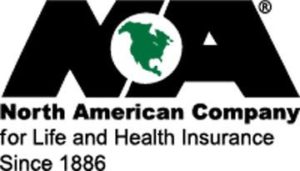We’ve often applauded the “tax advantages of life insurance“. Both whole life insurance and universal life insurance offer advantages for accumulating cash value inside a life insurance policy. However, for wealthier individuals who invest in rare opportunities such as hedge funds, traditional options may lack an amount of, shall we say, sex appeal. If you’re among this group, what if you could get tax free growth by investing inside a private placement life insurance policy?
What is Private Placement Life Insurance?
Private placement insurance is actually a niche product that many people, even in the insurance industry, don’t know about. One reason for this is that the life insurers and professionals who provide this sophisticated product take a different approach from the typical life insurance model.
Often, typical life insurance agents tend to emphasize life insurance as “all about” purchasing a death benefit. Private placement life insurance emphasizes life insurance as an investment strategy with tax advantages.
Even the staunchest life insurance critic will usually admit that permanent life insurance can benefit wealthier people. While I usually take issue with the “only for the wealthy commentary about insurance“, private placement life is suited for the wealthier investors in the same way as, say, offshore asset protection. There are approximately $15 billion in private placement assets under management in the onshore and offshore marketplace.
We’ve often talked about life insurance differently than the masses, and in this way, private placement life insurance is synonymous with the kind of unconventional approach that we’ve often advocated.
For example, you might use the infinite banking concept®, and paid up additions, to create a life insurance policy that is designed to build cash values in a tax advantaged environment. You might similarly use private placement insurance to build wealth using preferred investment selections but in a tax efficient way.
A Type of Universal Life Insurance
Private placement life insurance is a type of universal life insurance. Universal life insurance is a type of permanent life insurance that ties your cash value growth in the policy to one or more investment accounts.
The three general types of universal life insurance are:
Guaranteed universal life ties the cash value growth to a specific low interest bearing account.
Indexed universal life ties the cash value to one or more financial indexes such as the S&P 500.
Variable universal life ties the cash value growth to hedged market based investments such as mutual funds.
The cash value accumulation in variable universal life policies is tied to the performance of a variety of separate market based accounts similar to mutual funds. Thus, the insurance companies must register these variable policies with state and federal securities regulators.
Universal policies classified as “variable” may only be sold by people with a securities license. So, the policy holder obtains the benefits of life insurance, such as a death benefit, while also maintaining investments in the financial markets.
Private Placement Differences and Advantages
Private placement life insurance is a type of variable universal life insurance. However, there are some notable differences with private placement insurance verses the type of variable life insurance offered to the general public.
Some key differences between private placement life insurance and traditional insurance policies are:
- Private placement insurance does NOT need to be registered with securities regulators
- Institutional pricing (lower costs structure)
- Customized and privately negotiated
- Added flexibility for investment strategies, changing asset managers and policy withdrawal
- Only for “accredited investors” who are “qualified purchasers”
- Targeted typically toward $4 – $5 million investment or greater (although smaller amounts are possible)
- Offerings include large well known insurance carriers as well as other “international companies” and offshore carriers
There are a number of advantages with private placement insurance verses other investment options, some of which are:
- Tax free environment for “tax inefficient” investment such as hedge funds
- Low cost structure (may be less than 1% of investment amount per annum)
- Death benefits and creditor protection depending upon jurisdiction
Relaxed Securities Registration and Accredited Investors
The reason for the difference and advantages discussed above is that private placement life insurance policies are only offered to accredited investors. Accredited investors ARE sophisticated investors who are presumed to be represented by a battery of financial and legal pros. So, the disclosures that accompany standard policies are not required.
Investors also need to be qualified to play in this league. Generally, to be qualified as an “accredited investor” you should be earning at least $200,000 a year individually, or $300,000 jointly, and have at least $1 million net worth. Accredited investors must have at least $5 million in invest-able assets. You also must, of course, qualify medically for life insurance.
Pricing Advantages
Life insurance critics often complain about the cost of permanent life insurance. Although the cost dispute is highly debatable given the huge hidden costs in traditional investments such as mutual funds, and hedge funds, this is an area where private placement tends to shine.
An attorney is usually used to draw up a private placement policy because it is very complicated to do so correctly. So, there may be some higher up front costs associated with this strategy. However, in the private placement setting, the long term costs of insurance can be negotiated. As a result, private placement life insurance products generally have no surrender charges and the commissions range from 1 – 3% which is much lower compared to the standard commission rates of most conventional public life insurance products.
Private Placement Life Insurance Companies
While this topic is one for a future article, it should be noted here that the large life insurance companies, those in our list of top ten dividend paying whole life insurance companies among others, have uniformly exited the private placement marketplace. As a result, this marketplace is dominated by small closely held life insurers who are very sophisticated but without the clout of Mass Mutual or Penn Mutual.
Investment Control and Income Tax Advantages
Investment Control and Flexibility
Once area of investment frequented by wealthier investors is hedge funds. It isn’t uncommon for hedge funds to deliver returns in the double digits.
However, hedge fund gains are taxed at maximum tax rates because they are frequently traded. Depending on the state taxes, combined state and federal top tax rates can approach 50%. So, these gains not “efficient” for tax purposes.
Policies offered as private placement insurance are customized to meet the individual preferences of the investor. Thus, as the investor in a private placement life insurance policy, you get to determine your desired investments from a list pre-selected from the insurance company that is much broader than what is offered by conventional polices.
If you’re comfortable with a certain hedge fund, you may not be able to just move it into the policy. Also, investing in things like art or other valuables is NOT allowed. If you’re more control based, these limitations could be a “turn off”. However, consider the tax advantages to follow.
As long as your policy remains in force, investments accumulate tax free. You can access the cash tax free by either taking life insurance policy loans * or withdrawing cash not to exceed the amount invested in the insurance contract. Cash withdrawals can generate income taxes if done improperly as described in this section.
Usually up to about 90% of the gains in cash value can be taken tax free in the form of policy loans. The exception is if the policy was purchased with the intent to allow it to become a Modified Endowment Contract. This would mean that the policy owner didn’t care about maintaining the preferred tax treatment of the policy. One reason would be if the wealthy person was only purchasing the permanent death benefit for the heirs.
Other policy benefits include college funding, retirement income and death benefits and tax free transfers to your heirs.
Contrary to what is often touted in class warfare circles, the wealthy (top 1%) pay most of the taxes in this country. By most statistics, this group pays nearly 1/2 of all federal income taxes.
Death Benefit, Estate Taxes and Asset Protection
Remembering the Death Benefit
In the discussion of private placement life insurance, it is easy to forget that after all is said and done and you’ve gained income tax advantages by utilizing this strategy, you’ve also purchased a substantial death benefit for your heirs. Even if you do have a large estate, a lump sum death benefit is often needed to provide necessary liquidity for business continuity and family business succession planning. This liquidity may also be needed to cover federal estate taxes.
Federal Estate Tax Planning
Another important planning concern if you’re among the wealthiest Americans is federal estate taxes. Important federal estate tax planning is needed to avoid the tax consequences assessed upon the estate holder’s death. By designating an irrevocable trust to hold the private placement life insurance, assets can grow outside of the taxable estate. In this way, federal estate taxes can be limited or avoided.
Examples of the types of irrevocable trusts that may be used are irrevocable life insurance trusts (ILIT), charitable trusts or other domestic and offshore asset protection trusts.
The federal estate tax is a lump sum tax that is based upon the total amount of the gross estate at death. It is a lump sum tax of approximately 40% and must be paid within 9 months of death. Although this tax is only imposed upon the wealthiest estates (exceeding $5.49 million single/$11.8 million married), it can have the affect of forcing family businesses and other asset heavy ventures to liquidate.
By gifting assets out of the estate (such as funds to pay insurance policy premiums) to trusts, the policy values can grow outside of the estate and the accumulation is not subject to the federal estate tax.
So, for maximum investment control with tax savings AND estate planning, you might consider private placement life insurance. If you have questions or would like a customized proposal, you’re welcome to call or e-mail us today.
Please note: Private Placement Life Insurance and Annuities are unregistered products and are not subject to the same regulatory requirements as registered products. As such, Private Placement Life Insurance and Annuities can only be offered to accredited investors or qualified purchasers as described by the Securities Act of 1933.



